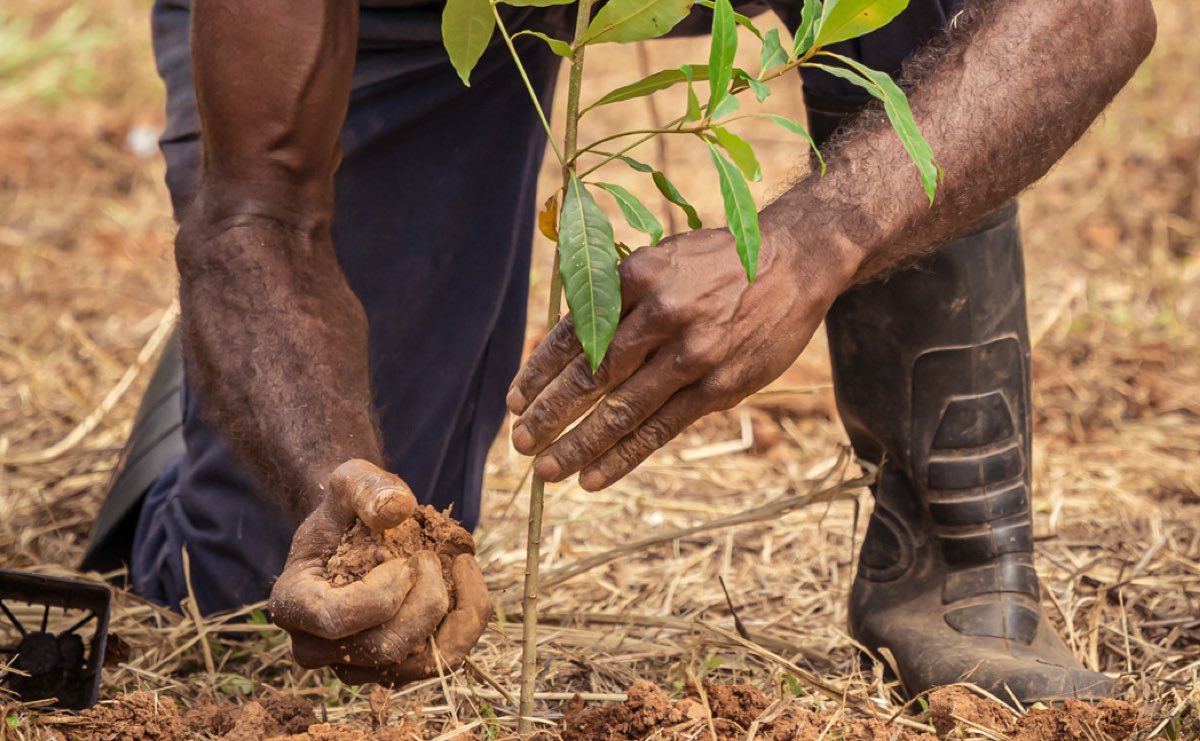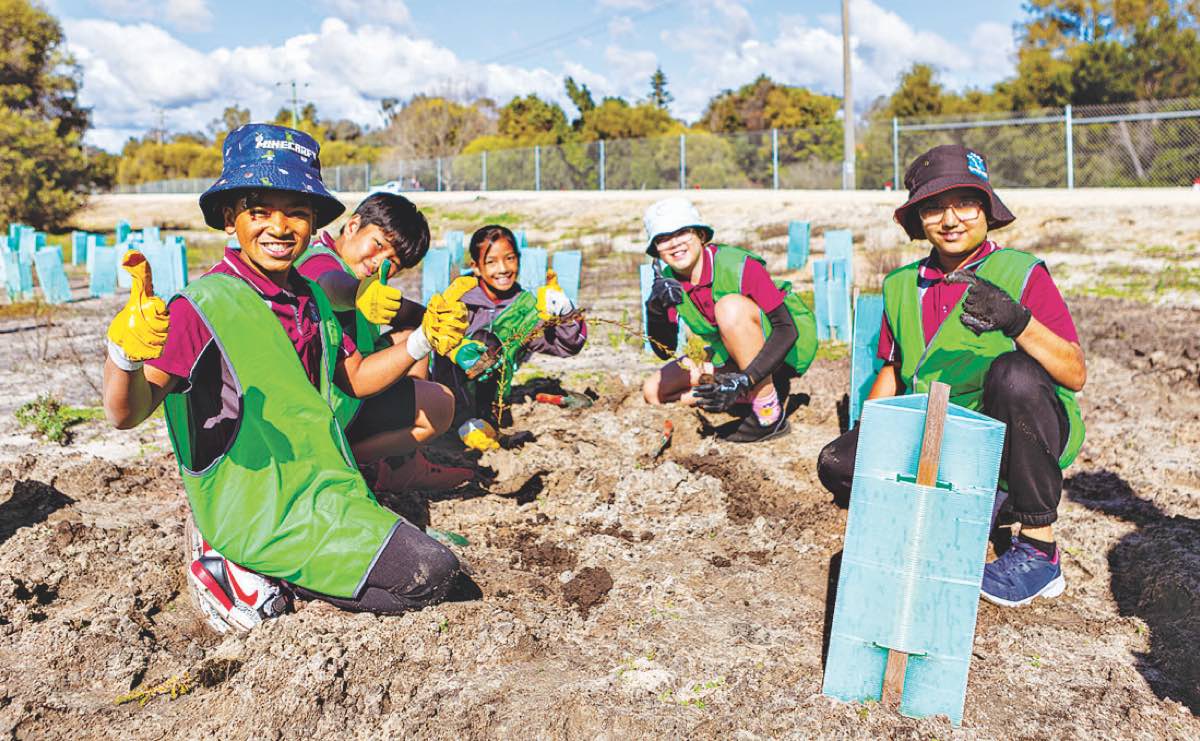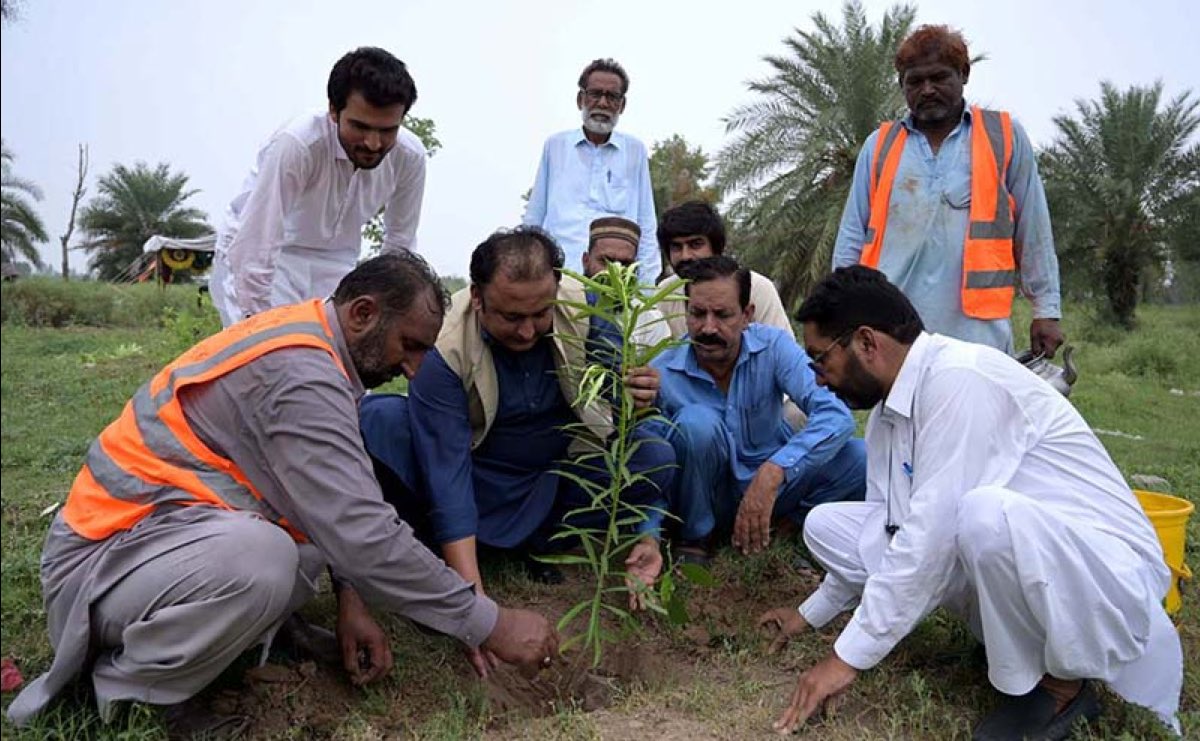Communities Unite For Global Tree Planting Initiatives
Local schools, governments, and organisations work together to create greener environments through innovative tree-planting campaigns.
Tree planting is more than just an act of environmental restoration; it’s a movement that connects communities around the world in the fight against climate change. Global initiatives like these remind us that whether in the Daintree or across the globe, people are coming together to heal our planet, one tree at a time. This article, originally published by Evrim Ağacı, showcases how schools, organisations, and local governments are uniting for a greener future. It also highlights the significant work happening at NightWings Rainforest Centre, demonstrating the power of community in restoring ecosystems. Read the full story below and see how the global effort to replant the Earth is gaining momentum.

2021 Annual Community Tree Planting at NightWings
Image credit © Martin Stringer
Tree planting efforts have become increasingly important around the world as communities recognize the significance of trees for environmental health. These initiatives not only help to combat climate change but also promote biodiversity and community engagement. This year, events held across various locations showcase how local groups and institutions are channeling their efforts to make the world greener.
For example, the Brabham Primary School’s green team recently celebrated their second annual Planting Day, participating actively in National Tree Day activities. Together with the Peet company, these students contributed to planting over 250 seedlings within the Brabham estate. This event emphasises the importance of practical learning for schoolchildren, allowing them to develop hands-on skills and insights about their local ecosystems. Jessica Fisher, one of the teachers involved, expressed pride at seeing her students embrace such valuable lessons: “The smiles on their faces and the mud on their shoes were a testimony to this excitement.” She noted their commitment to environmental stewardship as critical to the school’s educational ethos.
The CEO of Peet, Brendan Gore, reinforced this sentiment, explaining how these tree planting initiatives inspire younger generations to actively participate in building healthier communities. He illustrated this by highlighting Peet’s commitment to sustainability projects across various states. Initiatives like the Brabham Planting Day aim to nurture the next generation of environmental leaders, helping them understand their roles within their communities and the larger environment.

Brabham Primary School’s green team took part in an excursion to plant new trees in a bushland area.
Image source: Echo Newspaper
Simultaneously, at the BHC’s East Campus, a tree planting ceremony honoured Dr. Charles Laws for his years of service with the Black Hawk College Foundation. This event marked the fourth tree planted at the East Campus Arboretum, establishing both a tribute and the continuation of reforestation endeavours on campus. The foundation opted for planting a Swamp White Oak, emphasizing the importance of living memorials through nature. Dr. Laws’s involvement also highlighted the commitment of educational institutions to awareness and action surrounding environmental issues.
Bringing community participation to the forefront, the NightWings Rainforest Centre has embarked on an ambitious project spearheaded by Rainforest Rescue, aimed at transforming old sugarcane fields back to their natural rainforest state. The goal is to restore fifteen hectares of land to its former glory as part of the efforts to rehabilitate the Daintree lowland rainforest. Since the project started, thousands of tree species have been planted, fostering biodiversity and providing habitats for local wildlife. The initiative reflects not just environmental restoration, but also community engagement as volunteers come together to support the growth of the rainforest.
Visiting the NightWings site shows one the tangible effects of this restoration project, where once baron land now blooms with life. The diversity of trees—over 150 species, many of which are fruit-bearing—has created favourable conditions for local birds and bats, which play critical roles as pollinators and seed dispersers. By promoting such biodiverse ecosystems, the project is addressing climate change and contributing to animal conservation. “The success of the NightWings project relies on the support of committed people, businesses, and organisations,” Annie Schoenberger, the founder of the NightWings Rainforest Centre stated, emphasising the importance of collective effort.
The restoration of these forests does not only aim to help terrestrial environments but has significant positive impacts on marine ecosystems as well. The reduced sedimentation levels attributed to this restoration work have led to improvements in water quality, benefiting marine life along the Great Barrier Reef. The association between land and marine health is increasingly being recognized as integral to holistic environmental strategies.
Continuing the trend of tree planting campaigns, local government initiatives such as those led by Deputy Director Local Government Babar Shahzad Ranjha highlight the importance of systemic approaches to environmental restoration. His active involvement underlines the leadership engaging their communities directly by participating and advocating tree planting events. Such campaigns demonstrate how local governments can positively impact community health and environmental sustainability.

Deputy Director Local Government Babar Shahzad Ranjha is planting a sapling at Sargodha District, Punjab.
Image source: Associated Press of Pakistan
Other tree planting events targeted community involvement and educational awareness, underlining the importance of educating citizens on their role within the larger ecosystem. Organisations are pushing for more public engagement through tree planting, striving for experiences shared between volunteers and residents alike. These activities encourage constant interaction between people and nature, fostering sentiments of community and mutual responsibility for environmental care.
Research indicates the far-reaching effects of tree planting activities. Trees contribute to cleaner air, improved mental health, and general ecosystem functions. An increase of green spaces within urban areas enhances climate resilience and promotes biodiversity, making cities more liveable. Such insights might encourage other regions to adopt similar initiatives and help local communities work together for the sake of mutual benefit.
Looking to the future, the continued dedication from various organizations, schools, and governments demonstrates strong community effort working for environmental advancement. They are not only creating sustainable ecosystems but also inspiring the next generation to be ready for environmental challenges. Hence, tree planting campaigns offer more than just greenery; they serve as critical educational tools, community-building exercises, and expansive growth opportunities for local habitats.
The variety of programs being initiated across the globe emphasises how tree planting can be adapted to fit different communities and environments, making it relevant no matter where the effort takes place. Everyone can play their part, and as these stories of collaboration and action demonstrate, the combined efforts will lead to long-term benefits for all.
Thus, tree-planting initiatives have become symbols of hope and restoration as communities endeavour to repair and revitalise their environments. By participating actively, people not only beautify their surroundings but also equip the planet to face the immense challenge of climate change. Each tree planted is one more opportunity for growth—not just for the trees themselves but for the community connections being formed, exemplifying the absolute necessity of unity for environmental restoration.

This article, first featured on the Evrim Ağacı website, highlights the power of community-led restoration efforts and the importance of global collaboration in tackling the challenges posed by climate change. Evrim Ağacı is a leading platform in Turkey that covers a wide range of scientific topics, including climate and environmental conservation, to inspire positive action. You can read the original article on their website here.
Want more good Rainforest news in your life?
Subscribe to our eNews | Follow us on Instagram | Like us on Facebook | Subscribe to our YouTube channel
Help Protect Rainforests Forever
Donate to Protect Rainforests Forever | Become a Rainforest Guardian for as little as $2 a month | Partnership Options

